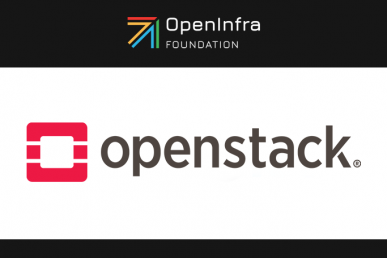There are various techniques, strategies and policies designed to protect access to digital assets. One such mechanism that has gained significant attention in recent years is Attribute-Based Access Control (ABAC). In this comprehensive guide, we will explore the potential of ABAC, how it differs from RBAC (Role-Based Access Control), its attributes and policies and how it can be implemented in OpenStack environments.
What Is ABAC?
ABAC, an acronym for Attribute-Based Access Control, is a sophisticated authorization strategy that grants access rights based on attributes. These attributes can pertain to the user, the resource, the environment, and the action. Unlike traditional access control models that rely on predefined roles or security levels assigned to users, ABAC uses policies that combine attributes together. The result is a flexible, fine-grained access control system that can adapt to the evolving needs of businesses and organizations.
In an ABAC model, every time a user tries to access a resource, the access control system evaluates relevant policies. It checks the attributes of the user and the resource against the conditions defined in the policies. Depending on the outcome of this evaluation, access is either granted or denied. This dynamic and context-aware access control model is more scalable and adjustable compared to fixed-role or level-based access controls, making it a preferred choice for complex, multi-cloud environments. Read this in-depth blog post for more background on attribute-based access control.
How ABAC Differs from RBAC
RBAC, or Role-Based Access Control, is another popular access control model. In RBAC, access permissions are based on roles assigned to users. This means that if you have a certain role, you get certain permissions. It’s straightforward and works well in scenarios where access control requirements are relatively static.
ABAC takes this a step further. Instead of just roles, ABAC can consider a wide range of attributes – from the location and time of access request to the sensitivity of the data being accessed. This flexibility allows ABAC to support more complex and dynamic access control scenarios. For example, a healthcare system might use ABAC to enforce a policy that only allows doctors to view patient records when they are on duty and at the hospital premises.
ABAC can handle RBAC scenarios too. Roles can be treated as just another type of attribute in ABAC, which means you can implement role-based policies within an ABAC system. ABAC is a superset of RBAC – it can do everything RBAC can do, and more.
However, it is worth mentioning that many experts believe ABAC is inferior to RBAC because of its complexity. This means ABAC can be more difficult to implement, and can also result in configuration errors, which can lead to security issues.
Attributes and Policies in ABAC
Dynamic Access Control
One of the key advantages of ABAC is its dynamic nature. ABAC evaluates policies every time an access request is made. This means that changes in attributes – such as a user being promoted or a file being reclassified as confidential – can immediately affect access decisions. In contrast, RBAC would require an update to role assignments or permissions, which could be a manual and slow process.
Enhanced Security
ABAC enhances security by enabling fine-grained access control. By considering a wide range of attributes, ABAC allows organizations to define complex policies that precisely match their security requirements. For instance, you can create a policy that only grants access to financial data to employees in the finance department, during business hours, from corporate devices, and when using a secure connection.
Support for Hybrid and Multi-Cloud Strategies
ABAC is well-suited to diverse and distributed environments. Its attribute-based approach can accommodate the complexity of hybrid and multi-cloud architectures. For example, attributes can represent cloud-specific information such as the provider, region, or instance type. This can help organizations enforce consistent access control policies across their entire infrastructure, regardless of where resources are located.
Audit and Monitoring Capabilities
ABAC’s attribute and policy-based approach provides excellent audit and monitoring capabilities. Each access decision can be logged with detailed information about the attributes and policies involved. This can help organizations track who accessed what, when, and under what conditions, providing valuable insights for security audits, compliance checks, and forensic investigations.
Implementing ABAC in OpenStack
Let’s briefly review the steps required to implement ABAC in OpenStack.
Using policy.json in OpenStack Services
OpenStack uses a policy.json file in its services to enforce Role-Based Access Control (RBAC). However, we can modify this to implement ABAC in OpenStack.
The policy.json file is a JSON format file that contains a list of rules. These rules define the actions that can be performed by different roles in the OpenStack environment. In the context of ABAC, these rules can also take into account the attributes of the user, resource, action, and environment.
Let’s consider an example. Suppose we want to restrict access to a certain type of resource based on the user’s department and the time of day. We can define a policy rule in the policy.json file as follows:
"example:restricted_action": "role:admin and user.department == 'finance' and time.hour >= 9 and time.hour <= 17"
In this rule, the action “example:restricted_action” can only be performed by a user with the role “admin”, who belongs to the “finance” department, and only between 9 AM and 5 PM.
By defining such rules, we can implement ABAC in OpenStack services using the policy.json file. However, this approach has its limitations. It requires manual modification of the policy.json file, which can be error-prone and difficult to manage for large environments. Also, it does not support dynamic policy enforcement, which we’ll discuss in the next section.
Dynamic Policy Enforcement
In a dynamic environment like OpenStack, static policy rules may not be sufficient. We need a mechanism to enforce policies dynamically, taking into account the changing attributes of users, resources, actions, and the environment.
ABAC allows us to define policies based on attributes, which can be dynamically evaluated at runtime. This means we can enforce access control based on the current state of the system, rather than predefined roles.
For example, let’s consider a scenario where we need to restrict access to a resource when the system load is high. We can define an ABAC policy rule as follows:
"example:restricted_action": "role:admin and system.load < 80%”
In this rule, the action “example:restricted_action” can only be performed by a user with the role “admin”, and only when the system load is less than 80%. This rule is evaluated dynamically at runtime, taking into account the current system load.
To implement dynamic policy enforcement in OpenStack, we can use a policy decision point (PDP) that supports ABAC, such as Open Policy Agent (OPA). In the next section, we’ll discuss how to integrate an external PDP with OpenStack.
Integrating External Policy Decision Points (PDP) with OpenStack
A policy decision point (PDP) is a component that evaluates access requests against policy rules and makes a decision on whether to grant or deny access. While OpenStack has a built-in PDP, it is primarily designed for RBAC and does not fully support ABAC. To overcome this, we can integrate an external PDP that supports ABAC, such as Open Policy Agent (OPA), with OpenStack.
OPA is an open-source, general-purpose policy engine that supports ABAC. It allows us to define policy rules in a high-level declarative language, which can be dynamically evaluated at runtime. OPA also provides an API that can be integrated with OpenStack to enforce ABAC policies.
To integrate OPA with OpenStack, we need to configure OpenStack to send access requests to OPA for evaluation. This can be done by modifying the OpenStack configuration files to specify the OPA API endpoint as the policy decision point. We also need to define ABAC policy rules in OPA, which can be done using the OPA policy language.
By integrating an external PDP with OpenStack, we can leverage the full power of ABAC to secure our cloud environment. This not only provides greater flexibility and control over access control but also enables dynamic policy enforcement based on the current state of the system.
Conclusion
ABAC provides a flexible, dynamic, and security-enhancing access control solution. Whether implemented natively, through third-party solutions, or in combination with RBAC, ABAC can help organizations protect their data and resources in today’s complex, multi-cloud environments. By understanding and unlocking the potential of ABAC, you can take a significant step toward enhancing your organization’s security posture.
- Kubernetes Troubleshooting: A Practical Guide - May 21, 2024
- Overview of the OpenStack Documentation - March 18, 2024
- Refactoring Your Application for OpenStack: Step-by-Step - December 27, 2023

)










